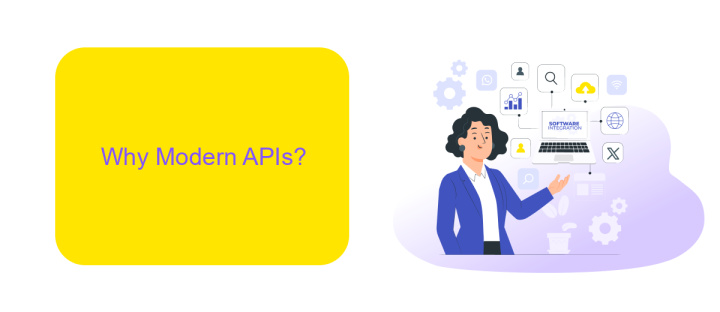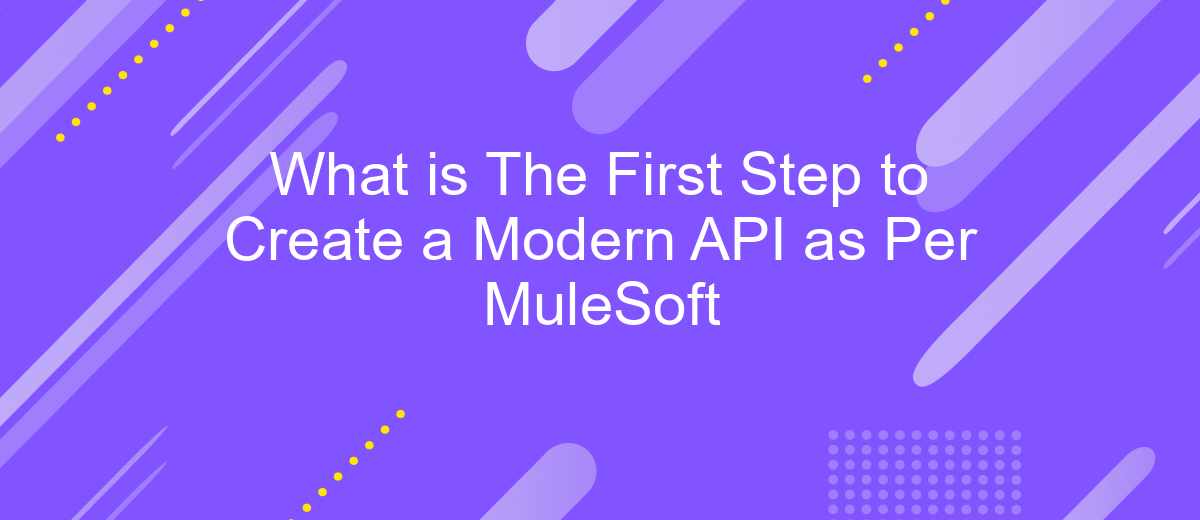What is The First Step to Create a Modern API as Per MuleSoft
Creating a modern API is a crucial step in today's digital landscape, enabling seamless integration and data exchange across various platforms. According to MuleSoft, the first step in this process involves defining the API's purpose and scope. This foundational step sets the stage for designing an efficient, scalable, and secure API that meets the specific needs of your organization.
Introduction
Creating a modern API is essential for businesses looking to streamline operations and enhance connectivity. MuleSoft, a leader in API-led connectivity, provides a comprehensive approach to building APIs. The first step in this process involves understanding the requirements and setting up the necessary integrations. Tools like ApiX-Drive can be incredibly useful in this stage, offering seamless integration capabilities with various platforms.
- Identify the core requirements for your API.
- Choose the right tools and platforms for integration.
- Set up initial configurations using ApiX-Drive for seamless connectivity.
By following these initial steps, businesses can lay a strong foundation for their API projects. Utilizing services like ApiX-Drive ensures that integrations are smooth and efficient, allowing for a more connected and responsive system. This approach not only simplifies the development process but also enhances the overall functionality and scalability of the API.
Why Modern APIs?

Modern APIs are essential for businesses looking to stay competitive in today's fast-paced digital landscape. They provide a standardized way for different software systems to communicate, enabling seamless integration and data exchange. By leveraging modern APIs, companies can quickly adapt to changing market demands, streamline their operations, and enhance customer experiences. These APIs support a wide range of functionalities, from data retrieval and processing to complex transactions, making them indispensable tools for developers and enterprises alike.
One of the key benefits of modern APIs is their ability to facilitate integrations with various third-party services and platforms. For instance, ApiX-Drive offers a robust solution for connecting disparate systems, automating workflows, and synchronizing data across multiple applications. This not only reduces the time and effort required for manual integrations but also minimizes the risk of errors. By utilizing such services, businesses can ensure that their systems are always up-to-date and functioning efficiently, thereby driving innovation and growth.
The First Step: Defining Your API Strategy

Creating a modern API begins with a well-defined strategy. This initial step is crucial as it sets the foundation for all subsequent development and integration efforts. A clear API strategy ensures that your API aligns with your business goals, meets user needs, and integrates seamlessly with existing systems.
- Identify your business objectives: Determine what you aim to achieve with your API, such as enhancing customer experience or streamlining internal processes.
- Understand your target audience: Know who will use your API, whether it's internal teams, partners, or external developers.
- Evaluate existing systems: Assess your current infrastructure to ensure compatibility and identify any necessary upgrades.
- Choose the right tools: Select tools and platforms that facilitate API management and integration, such as ApiX-Drive, which simplifies the process of connecting various applications and services.
- Define security measures: Establish protocols to protect your API from unauthorized access and data breaches.
By meticulously defining your API strategy, you lay the groundwork for a successful implementation. Leveraging integration tools like ApiX-Drive can streamline the process, ensuring that your API is robust, secure, and capable of driving your business objectives forward.
What's Next? Building Your API

Once you have laid the groundwork for your modern API, the next step is to move forward with its development and implementation. This phase involves defining the endpoints, setting up the necessary integrations, and ensuring your API is robust and scalable.
Start by outlining the specific functionalities your API will offer. Determine the resources it will manage and the operations it will support. This will help you create a clear and concise API specification, which is crucial for both development and future maintenance.
- Define API endpoints and methods
- Set up authentication and authorization mechanisms
- Implement data validation and error handling
- Integrate with external services using tools like ApiX-Drive
- Conduct thorough testing to ensure reliability
Utilizing tools like ApiX-Drive can significantly streamline the integration process. ApiX-Drive offers a user-friendly platform to connect your API with various external services, enhancing its functionality and reach. By following these steps and leveraging the right tools, you can build a powerful and efficient API that meets your business needs.
# Conclusion
In conclusion, the first step to creating a modern API as per MuleSoft involves understanding the key principles of API-led connectivity. This approach emphasizes the importance of designing APIs that are reusable, scalable, and easy to manage. By focusing on these principles, developers can ensure that their APIs not only meet current business needs but are also adaptable to future requirements. The use of tools and platforms like ApiX-Drive can significantly streamline the integration process, allowing for seamless connectivity between various services and applications.
Moreover, leveraging ApiX-Drive's capabilities can help in automating workflows and reducing the manual effort required in setting up integrations. This not only enhances productivity but also minimizes the chances of errors, ensuring a more robust and reliable API ecosystem. As businesses continue to evolve, having a well-structured and efficiently managed API strategy will be crucial for maintaining competitive advantage and fostering innovation.
FAQ
What is the first step to create a modern API as per MuleSoft?
Why is it important to design an API before implementation?
How can I test my API design before implementation?
What tools are recommended for API design and testing?
How can I automate the integration of my API with other systems?
Do you want to achieve your goals in business, career and life faster and better? Do it with ApiX-Drive – a tool that will remove a significant part of the routine from workflows and free up additional time to achieve your goals. Test the capabilities of Apix-Drive for free – see for yourself the effectiveness of the tool.

